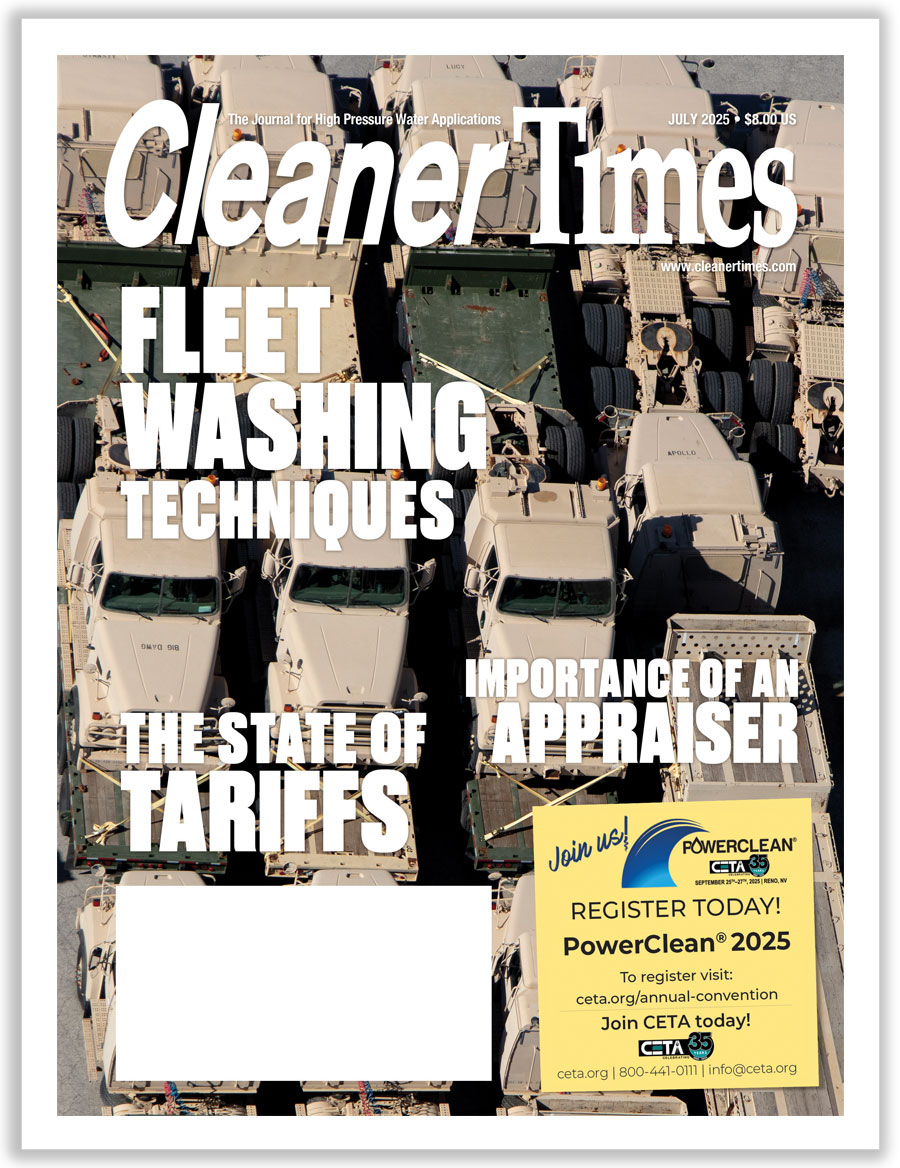
Hiring and Retaining Good Employees
By April Hirsch / Published June 2020

What does it cost to replace an employee? Estimates for an employee paid at an hourly rate settled around $10,000 in 2019. In the same year, it cost as much as two times the annual salary to hire a non-hourly employee.
Does this seem awfully high? Recall the W-4 and other payroll demands, including workers’ compensation and mandatory record keeping, as well as training and other transition costs.
Retaining a good employee is the second most important thing in building a team. The most important is hiring the right person in the first place.
For each business owner, the how-to-do-it formula will be unique. Much depends on the nature of the business and the size of the employee roster. Still, tapping the advice of colleagues in the industry ensures a good start.
One method for finding new team members is to reach out to members of the local community. “I wouldn’t necessarily call it a strategy, but I have always had the best results from hiring people through our church,” says Doug Rucker, owner of Clean and Green Solutions in Porter, TX.
“My wife is the children’s director at our church and pretty much knows everyone there,” explains Rucker. “When I need to hire someone, no matter the position, she usually knows someone who is looking for employment and knows if they would be a good fit.”
The scenario of censusing the community to find individuals who are seeking work adds a significant, sometimes understated positive dimension to hiring. By finding a bridge to those who very much want a position, there are positive results for both the employer and new hire. Why is that so?
Community members can talk informally with the person seeking a position and make certain the person understands the nature of the work. It’s an easy way to make certain everyone is on the same page.
Once an employee is hired, Rucker puts an emphasis on retention. And, he shares a tip for keeping employees. “Train, train, train, and give them ownership of roles that they can manage,” says Rucker. “Provide them with a key role so they are part of the company as opposed to just having a job. Ask and listen to their input when making changes or improvements to the company. They need to feel needed and, most importantly, wanted.”
Invest in retention. “It is more difficult to hire because you start the whole process over again, especially the training part and figuring out their strengths and weaknesses,” explains Rucker. “It costs way more money to hire a new employee than to retain a good one.”
Interviewing
When talking with a prospective hire, Roy G. Chappell, CEO of Chappell Supply and Equipment in Oklahoma City, OK, uses an extended question and answer format. He gauges the interest of the employee in the position, as well as the perception the employee has of the position.
Chappell says he starts with about four minutes of talking and asking questions. And he gives us some examples.
“First, ask what the first name is of their best friend and make a note of it, a little later ask what the first name is of another friend, and ask the same question a third time,” explains Chappell. “Then, toward the end of the interview, ask the applicant what each of these people does for a living and what he or she thinks they make a year.”
Why ask about earnings of friends? “That person will make within $10,000 on average of their friends,” says Chappell. “If the person makes more or less, it puts them in an uncomfortable position. The potential hire cannot do the things his friends do if he makes less. If he makes more, he is able to take that nice vacation, drive the nicer car, have a larger home…”
By assessing whether a potential hire has a realistic idea of compensation, an employer can be sure that the new employee will get off to a more comfortable start with the company. If a new hire wants more than the job pays, the hire may either not be fully engaged or be on a constant search for other work with a bigger paycheck.
 Chappell also talks with prospective hires about their work experience. “Ask about past positions or types of jobs—what company and how long. When talking of past jobs and employers, ask more questions (as allowed by law).”
Chappell also talks with prospective hires about their work experience. “Ask about past positions or types of jobs—what company and how long. When talking of past jobs and employers, ask more questions (as allowed by law).”
For example? “What was unusual or different about a particular job, and how did he like the people he worked with,” says Chappell. “The more you get the potential hire talking, the more you will find out.”
Taking the time to talk with someone who wants a position will bring forward much useful information. Chappell explains that it makes it possible to assess criteria such as “work habits, timeliness, attitudes toward fellow employees, standards for care of equipment, driving habits, earning expectations, etc.”
It’s also possible to ferret out information about how the employee learns from experience. “Ask, ‘What is the most unexpected thing that has happened to you on the job?’” says Chappell. “Let him talk.”
Then, follow up, says Chappell. “How did you handle it? Two or three days later, after thinking about it, what would you have done differently?”
The goal Chappell has is straightforward. “Ask questions to make the new hire think on his feet,” he says.
A prospective hire who can think on his or her feet and who genuinely wants a particular job is a good candidate even if some training is needed. Why? Because the prospective hire is willing and eager to learn.
Resources
It’s no surprise that there is extensive research on employee hiring and retention, such as the catalysts for turnover. Why do some employees stay while others leave?
Some individuals find a job and stay in it as long as possible, sometimes until they retire. They are stayers. The trick for an employer is to hire those who stay because they want to stay.
If an employee stays just to pick up a paycheck, that particular employee will likely not be the most productive team member. Readers can readily envision the many permutations of leave and stay scenarios, and owners have had experience with some of them.
A tough situation for an employer, for instance, involves an individual who is an excellent employee and wants to stay. However, the person must leave because a spouse has taken a job 2,000 miles away.
Thus, even with the best hiring outcomes and retention policies, good employees will leave. Such employees will do so despite the salary, incentives, bonuses, and retirement savings options an employer offers.
That does not mean a business owner should not aim to retain with an investment in ancillaries to pay. “Small Business Employee Recruitment and Retention” (www.sba.gov/course/small-business-employee-recruitment-retention), a 30-minute online course open and free to anyone, provides good tips on everything from small employee perks that boost retention to the importance of communication.
As our industry experts point out, listening to employees gives an owner a good sense of their concerns. An owner can use interactive settings, such as mandated safety training, to assess concerns aired that go beyond the immediate topic.
Responsiveness is something that employees notice. Although employees may not expect an immediate response to an “it would be nice if…” statement, when they see a response in due course, they know their concerns matter.
Successful business owners learn from experience. If they hire a team member who seemed during the interview process to be a superb fit and found the individual to be a bad fit, they review what they did and try not to repeat the mistake.
Employee turnover is not only costly but also weakens the cohesiveness of a team. Whenever a team is not at full strength, everyone must pick up the extra work, or sales opportunities must be scaled back.
Team members are willing to do their part, but if they feel they are being asked to do too much and jobs are abundant, they may decide to make a change.
Thus, the loss of a single employee can create a costly negative sequence. It’s always better to have engaged employees who leave a job reluctantly, after giving some notice, so that their replacement is ready as soon as they leave.
Tools to assist owners in search of employees are plentiful. One that does double duty is available from the Department of Veterans Affairs. “Why Veterans Make Good Employees” (www.va.gov/vetsinworkplace/docs/em_goodemployees.html) lists the strengths veterans bring to the workplace.
We write “double duty” because it reminds us what a good pool of prospective hires veterans are. And it also reminds us of the strengths that employers want to find in employees. That makes it a good one-page template an owner can use as a checklist when evaluating the results of an interview.
Here’s a summary (paraphrased) of the VA’s list of important characteristics for a strong employee: works well in a team, has a sense of duty, is realistic about experience, is organized/disciplined, has a strong work ethic, follows through (not diverted by difficulties, stressful conditions), has a variety of skills, shows problem solving ability, is adaptable (to change), and can follow rules and schedules.





